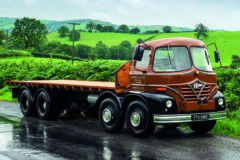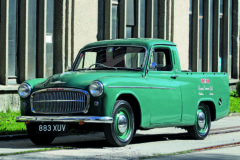Renault’s first proper tractor
Posted by Chris Graham on 7th November 2020
Mike Williams tells the fascinating story of the PE; Renault’s first proper tractor that grew out of the First World War tank-derived FT17 model.
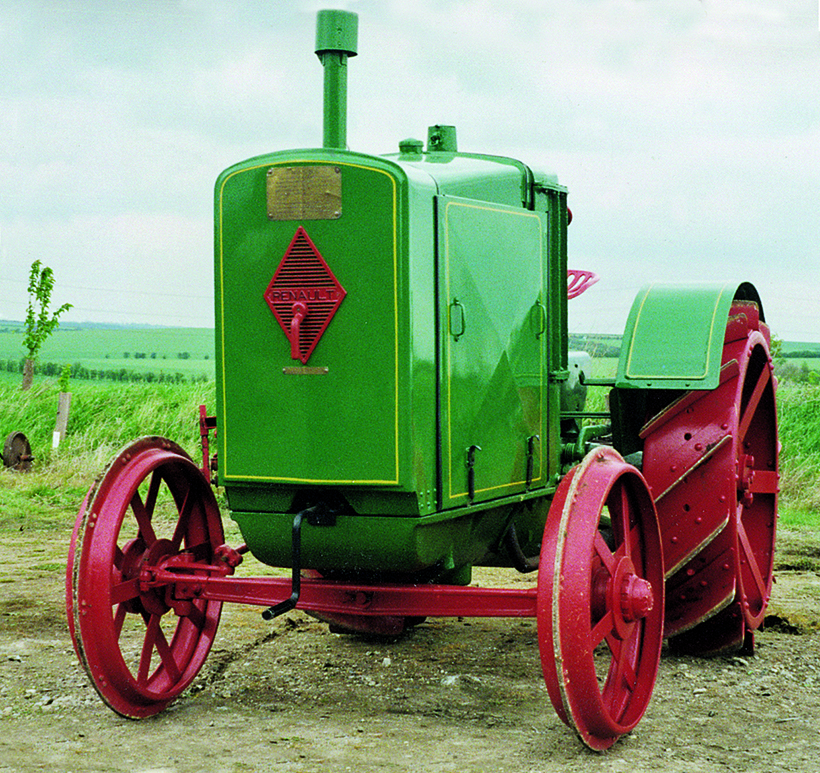
Renault’s first proper tractor: The PE was the French manufacturer’s first tractor that wasn’t based on the army’s FT17 tank.
Renault has been making cars in France for over 120 years and, for much of that time, it was also the leading French tractor manufacturer. The company was started by Louis Renault, a young man who had a talent for anything mechanical. He might have made a career in the large textile business owned by his father, but Louis was more interested in the cars that were arriving on the streets of Paris during the 1890s and, at the age of 20, he was experimenting with engines and building his own car in a workshop at the family home near Paris. The hobby became a business opportunity in 1898, when he sold a car he’d built and realised car production could be profitable.
In 1899, Louis and his two brothers formed a small company to make cars, starting with just six employees and occupying a 300m2 workshop. The business expanded rapidly, helped by publicity from success on the race track. There was also a strong demand for the Renault taxis that were becoming popular in several cities, including London.

Renault’s tractor production began in 1919, with the GP tracklayer; a machine that was developed from the French army’s FT17 tank.
Tank to tractor
The first tanks were developed in Britain, and the British army used them in 1916, with the French-built FT17 machine becoming available in 1917. Most of the French tanks were produced at the Renault factory, but some were also built by other manufacturers, on a sub-contract basis. The FT17 was smaller, lighter and carried less armour than its British counterparts, but it was produced in large numbers; over 3,000 had been built when the war ended in 1918.
As well as introducing battlefield tanks, the war also provided a convincing demonstration of the benefits of using tractor power as a replacement for horses and steam engines. With tractor sales increasing after the war ended, Renault engineers were able to convert the FT17 tank into the GP tractor, which became available in 1919. It was Renault’s first tractor, powered by a 30hp version of the tank’s 39hp petrol engine, and it was available only as a tracklayer at first, with a wheeled version – known as the HO – following in 1921.
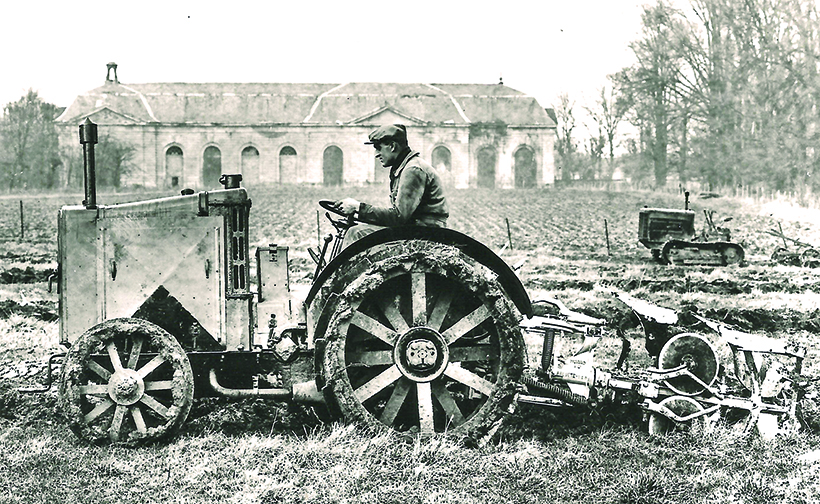
A Renault publicity photograph showing the PE fitted with the hydraulically-operated implement linkage, which was introduced in 1931.
Production history
At this stage, Renault tractors were still based on the design of the wartime FT17 tank, and this was a disadvantage as the market became increasingly competitive with lower prices available for tractors such as the imported Fordson Model F, and the French-built version of Britain’s Austin tractor. Renault production figures for this period were disappointing, with 425 of the GP tracklayers built in just under two years, while HO production totalled just over 200 between 1921 and 1926. The solution for Renault was to replace its tank-derived models with a completely new tractor, and the result was the PE model which was introduced during 1926.
The PE was the first Renault tractor that wasn’t based on the FT17 tank, and the first to be designed to run on wheels rather than tracks. It weighed 1.8 tonnes, which was significantly lighter than the tank-derived models, and it was also much more manoeuvrable. The PE power unit was a 2.1-litre Renault petrol engine producing 20hp; the same output as the 3.2-litre engine used in the HO tractor. But it was claimed to provide a big improvement in fuel efficiency, to usefully reduce running costs.
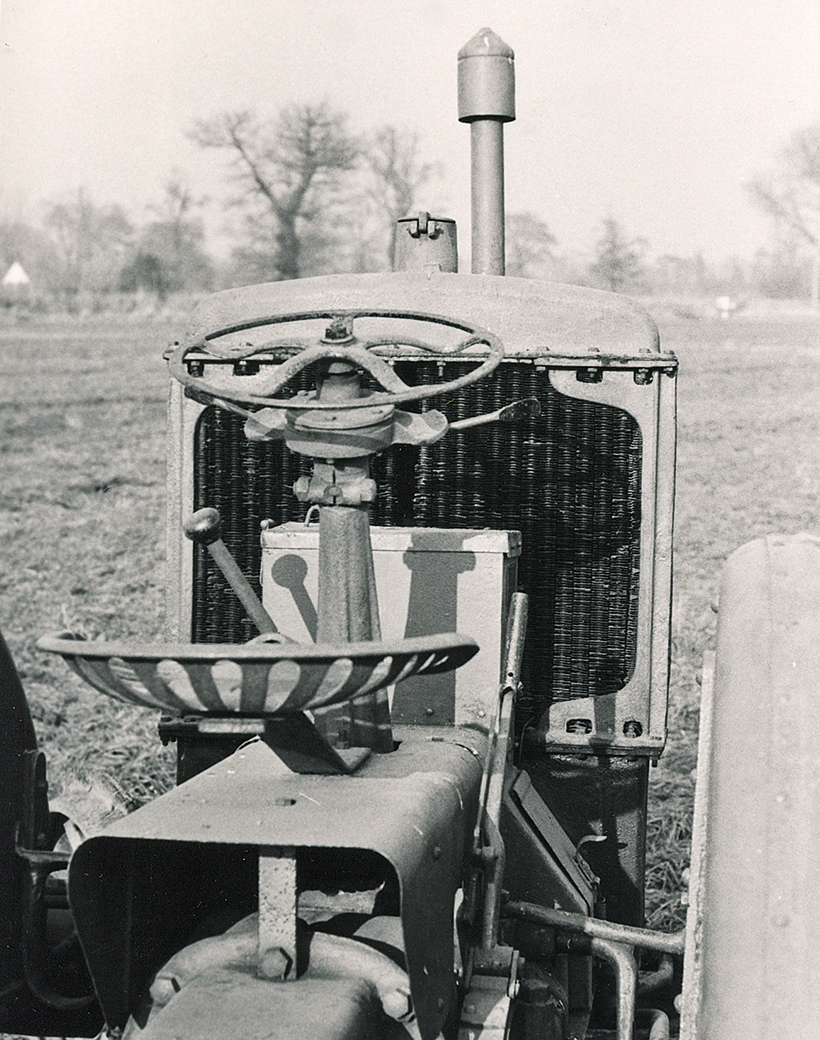
Early versions of the PE were designed with the radiator between the steering wheel and the rear of the engine.
An unusual layout
One of the PE design features, which was inherited from the previous tractors (and also from the FT17 tank and early Renault cars), was the unusual arrangement of locating the radiator behind the engine, instead of in front. This had become a distinctive Renault design feature, allowing a downward sloping bonnet line to improve the driver’s forward visibility. However, while being so close to the radiator’s warmth may have been welcomed by drivers on a cold day, the rear position probably reduced the radiator’s cooling efficiency as mit was forced to draw on warm air from the engine. The rectangular object that replaced the radiator in front of the PE engine included a large-capacity air cleaner.
A more conventional, front-mounted radiator position was adopted towards the end of the 10-year PE production period, allowing the air cleaner to be moved elsewhere and reduced in size. This was one of several design changes introduced before the PE was replaced, in 1936. The other developments included the addition of a hydraulically-operated implement linkage option in 1931, and Renault added electric starting to the options list in 1933. There was also a ‘narrow’ version offered, with 1.14m overall width, that was made available from 1928, mainly for working in vineyards.
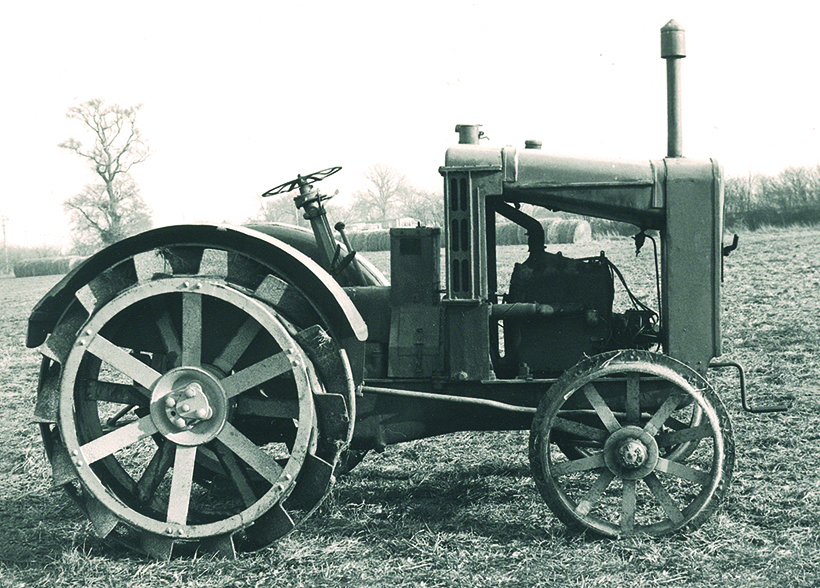
Placing the radiator behind the engine – instead of in front – is said to have improved the forward visibility while warming the driver in cold weather.
Rubber tyres arrive
Another important development arrived in 1933, when the PE was offered with inflatable rubber tyres on the front and rear wheels. The tyres – direct ancestors of those used on today’s tractors – were made in France by the Michelin company, following their 1932 introduction by Firestone in America on the Allis-Chalmers Model U tractor. Renault was the first French tractor company to offer the tyres as a factory-fitted option.
The sales figures during the early years of PE production were significantly higher than for the previous Renault models but, by the end of the 1920s, demand started being hit by the economic problems facing the farming industry worldwide. The production total for the PE for the 10 years from 1926, was 1,771 and, during the early 1930s, Renault introduced additional tractor models with lower specifications, including eight and 15hp engines to suit the reduction in the farming industry’s tractor and machinery investment.
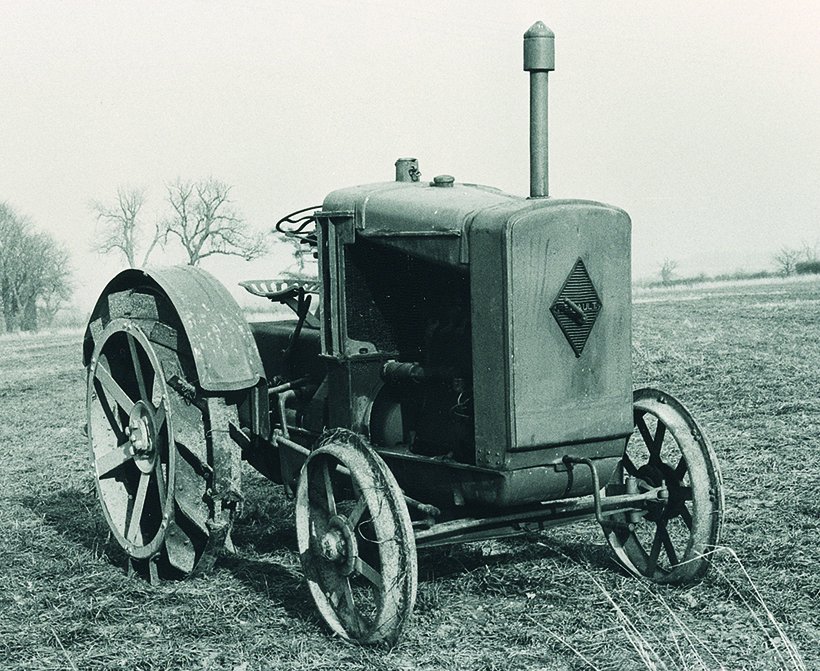
PE tractors weren’t exported to Britain, and this is one of the few surviving, UK-owned examples.
The later years
Renault vehicle production continued on a much-reduced scale during the Second World War, and there was also extensive damage to the manufacturing facilities. When the war ended in 1945, the company was nationalised to allow state funding to finance its recovery. This was successful, and Renault re-emerged as a leading, European manufacturer of tractors, as well as cars and commercial vehicles. Tractor successes since then have included the 1987 introduction of the Hydrostable cab suspension system, an important advance in driver comfort using a combination of shock absorbers and springs to reduce vibration and provide a smoother ride.
Negotiations to sell the Renault tractor business – to allow the company to concentrate on car and commercial vehicle production – began around 2003, and the process was completed in 2008, when Claas became the new owner and Renault ended 89 years of tractor production.
For a money-saving subscription to Tractor & Farming Heritage magazine, simply click here



